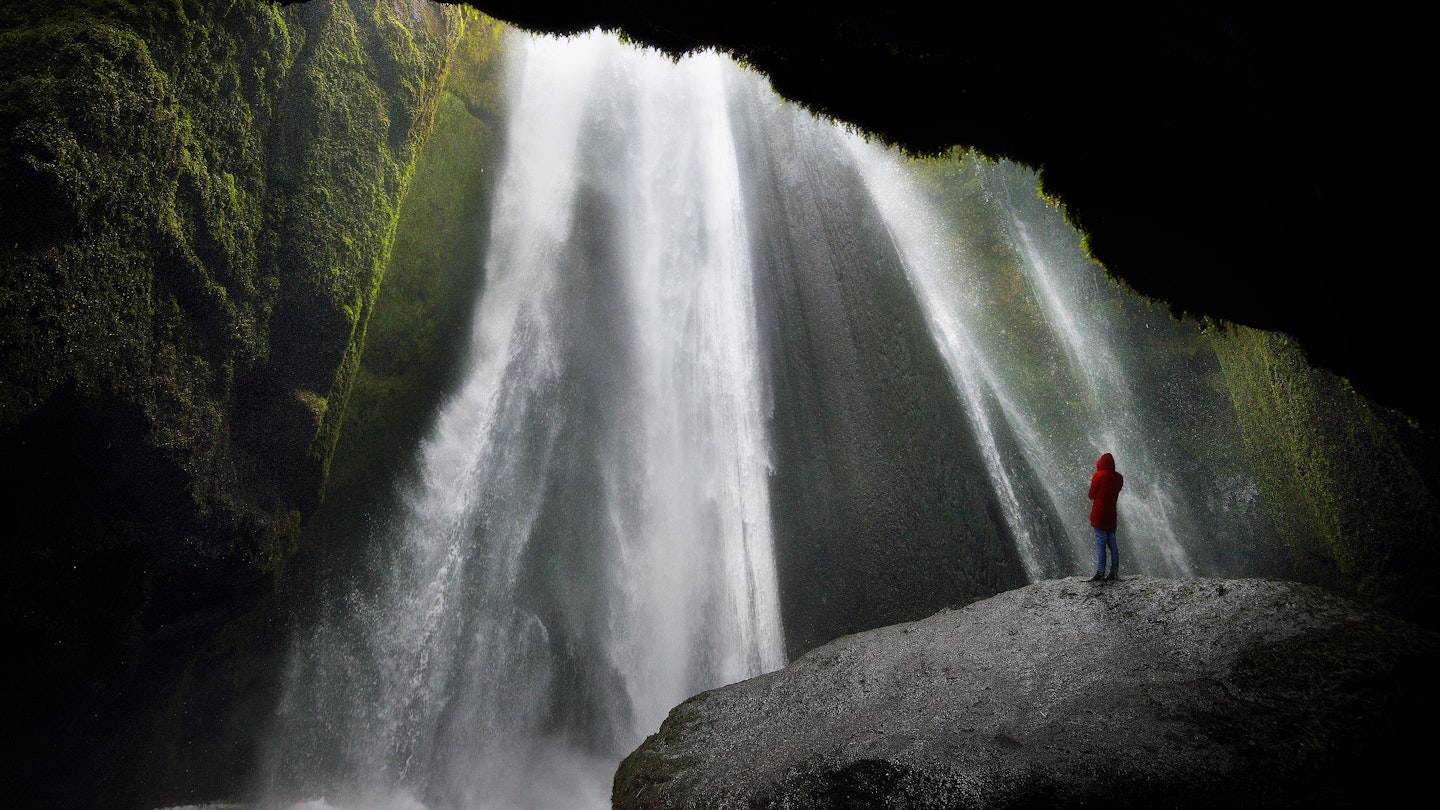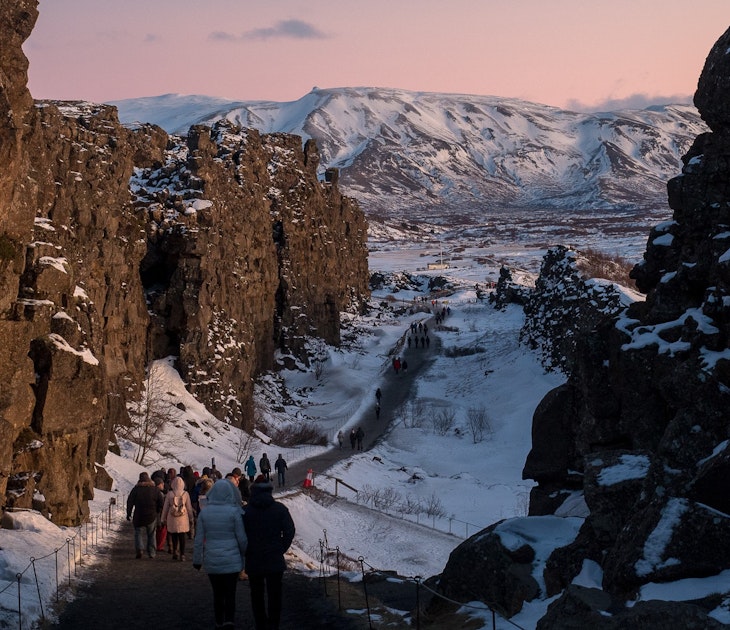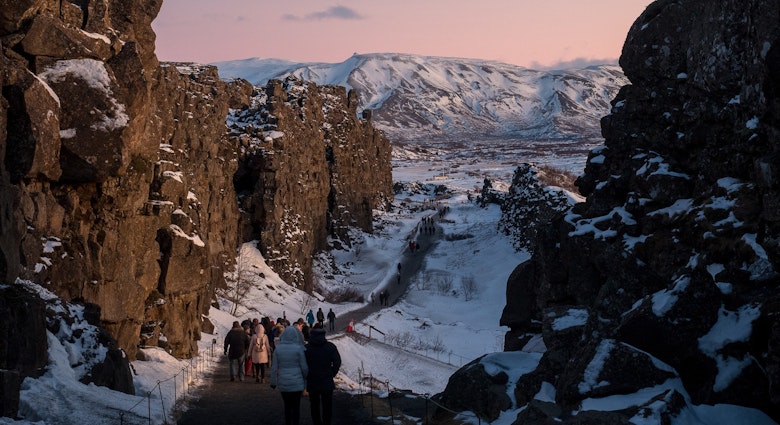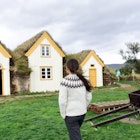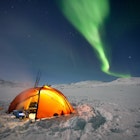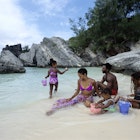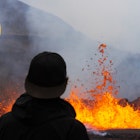Glaciers, terrain-tearing fissures, volcanoes, midnight sun and northern lights – adventures in Iceland offer the chance to see the planet reforming before your eyes.
About half the size of the UK, with a population of just over 300,000, Europe’s least-densely populated country has plenty of space, but Iceland is anything but empty. With three national parks in its arsenal, including the continent’s largest, it boasts a landscape literally littered with earth-shuddering geothermal activity and blow-your-mind dramatic formations.
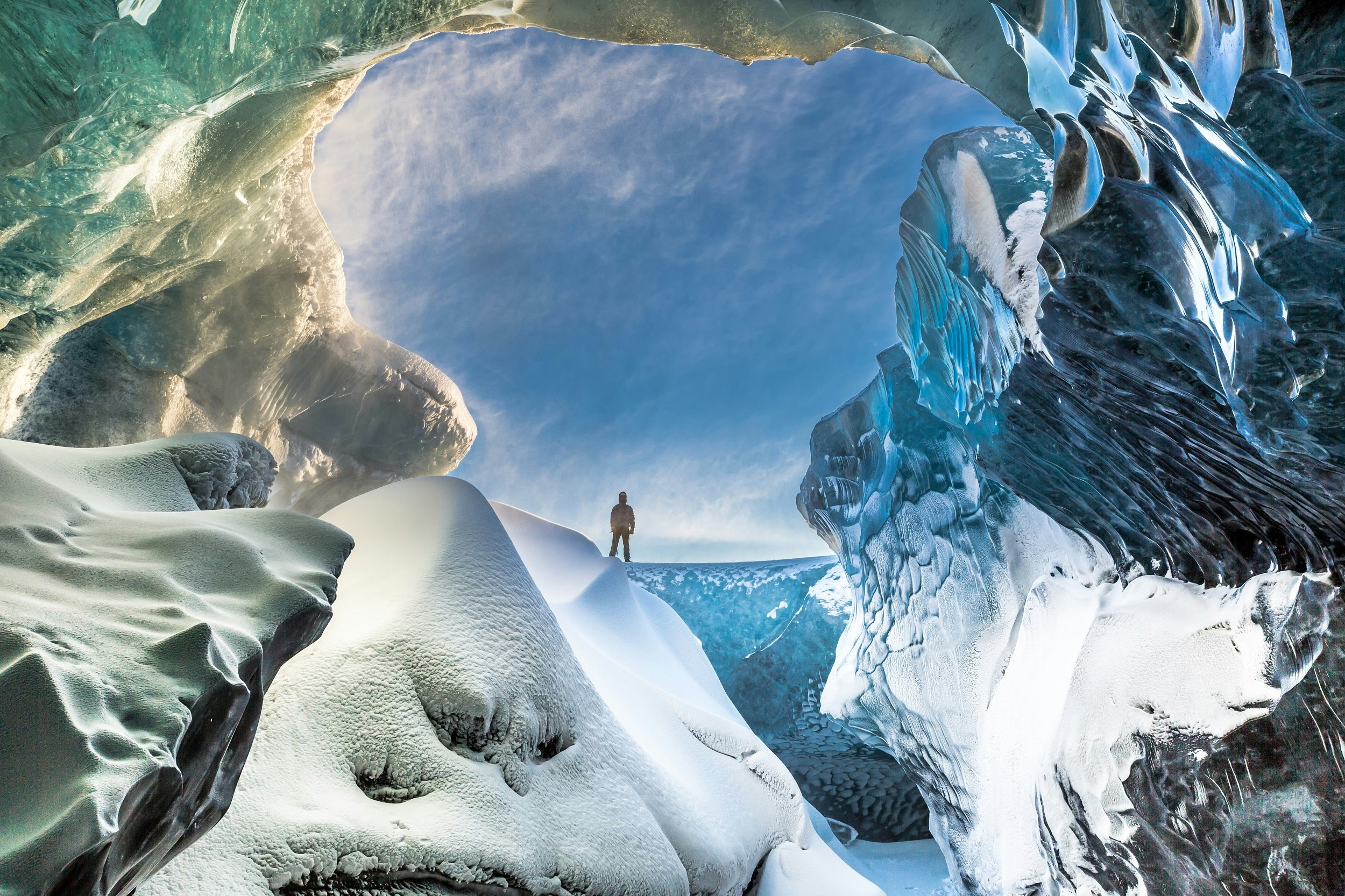
Pretty much straight from the capital of Reykjavik, you can go multiday hiking and wild camping on lava fields coated with centuries-old moss, venture to the edge of exploding geysers in the Geysir area or teeter on the tipping point of terrain-tearing fissures in Þingvellir National Park – above and below the water. For something even cooler, grab some crampons and get face-to-face with calving glaciers and dramatic ice caps at Vatnajökull National Park, or go on a mission with a more subterranean theme, descending into the dormant magma chamber of Thrihnjukagigur volcano.
Ski above the ocean at Hlíðarfjall, or jump in and ride the Atlantic waves that crash into the westerly Reykjanes Peninsula. Then, when you’ve worn yourself out, head to one of the natural hot springs at Reykholt, in West Iceland, to refresh tired limbs in the ‘new’ Blue Lagoon.
Read more: The real-life magic of rescuing baby puffins in the Westman Islands

1. Caving
From old lava tubes to glacial tunnels, caves once played a vital role in survival on Iceland, being utilised by farmers (and sometimes their cattle) to shelter from the elements, particularly in winter. Evidence of this can be seen in Víðgelmir, aka "The Cave", near the town of Reykholt. Just shy of 1600m long, with a height of 15.8m and a width of 16.5m, it’s the country’s largest cave and contains evidence of habitation spanning back to the Vikings. Walkers can undertake a guided excursion inside, and those feeling more adventurous can go further, climbing between the stalactites and burnt-red boulders to find the end. Other spelunking options can be found in Tvibollahraun lava field (25 minutes from Reykjavik) and Þingvellir National Park, where Gjábakkahellir ("Little Girl’s Cave") was formed some 9000 years ago.
Read more: The land of fire and ice: touring Iceland's Golden Circle

2. Diving the continental rift
Armed with scuba diving (or snorkelling) gear and a dry suit, adventurers can explore the Silfra fissure in Þingvellir National Park. Here, what appears to be a rocky channel is actually the crack between two continental plates, so you can literally place one hand on North America and the other on Europe while checking out the incredible water clarity (100m+ visibility) amid the green ‘troll hair’ algae.
Read more: An epic playlist for your Iceland road trip

3. Arctic surfing
Reykjanes peninsula juts into the ocean just an hour’s drive from Reykjavik (and right by Keflavik Airport). Ringed by volcanic reefs, the sheltered beaches here offer great surfing, and surprisingly – in summer at least – the water temperature isn’t dramatically colder than in Scotland (still, you do need a good thick wetsuit with hood, gloves and boots). Beginners should head to Sandvik’s black-sand beach, or join a surf camp. Organised surfing trips also visit the west fjords, Ólafsfjörður, and Snæfellsjökull Peninsula and national park.
Read more: Northern delights: a road trip along Iceland's Arctic Coast Way

4. Hiking
Iceland contains boot-pleasing hiking terrain at all points of the compass. In the southeast sprawls vast Vatnajökull National Park, home to the eponymous 3000-billion-tonne glacier, Europe’s largest chunk of ice. The frozen expanse of Vatnajökull partially or completely covers several volcanoes, including Öræfajökull, the summit crater of which protrudes from the ice to tempt climbers with Hvannadalshnjúkur (2110m), which is Iceland’s highest point.
West is Snæfellsjökull National Park, which has a huge 1446m volcano with a massive glacier bunging its vent as its centrepiece, while in the southwest is Þingvellir National Park, where you can hike over volcanic erratics and old lava fields. The renowned 55km Laugavegur Trail between the hot springs of Landmannalaugar and the glacial valley of Þórsmörk is now commonly crowded, but the similar Sveinstindur-to-Eldgja hike is comparatively people-free and has cleaner mountain huts en route.
In the little-visited east is Borgarfjörður, where the Víknaslóðir (Trails of the Deserted Inlets) weave between abandoned villages and rhyolite mountains to offer multiday hikes. More challenging walks are found in the remote Westfjords region – from the end of the road at Krossnes it takes a week to reach Hornstrandir and the nature reserve at its terminus, and hikers need to be completely self-sufficient, but at the end they’re rewarded with stunning red-sand beaches.
Read more: Once upon a time in Iceland: epic adventures in the northwest
5. Paragliding
Within an hour of the capital you can see the volcanic landscapes from a different perspective – via a tandem paraglide. Strap on to an instructor and leap off the south coast to soar above waterfalls (while others merely walk behind them), glaciers and black beaches, gliding alongside the Arctic terns and skuas.

6. Horse riding
Taking its unique credentials up another notch, Iceland is home to its own particular breed of horse. Still used for shepherding as well as leisure, these muscular, hardy, thick-coated equines even have an extra gait called the ‘tolt’, which is a smooth half-walk, half-run. Have a ride in the Víðidalur or Langadalur valleys, trek the historic Kjölur Route that journeys between two ice caps from north to south, then go to the northwest, where every autumn you can join locals as they round up more than 2000 horses from the highlands to take them down to graze in the lowlands over winter. After an auction, join in the celebrations with traditional lamb soup and song.
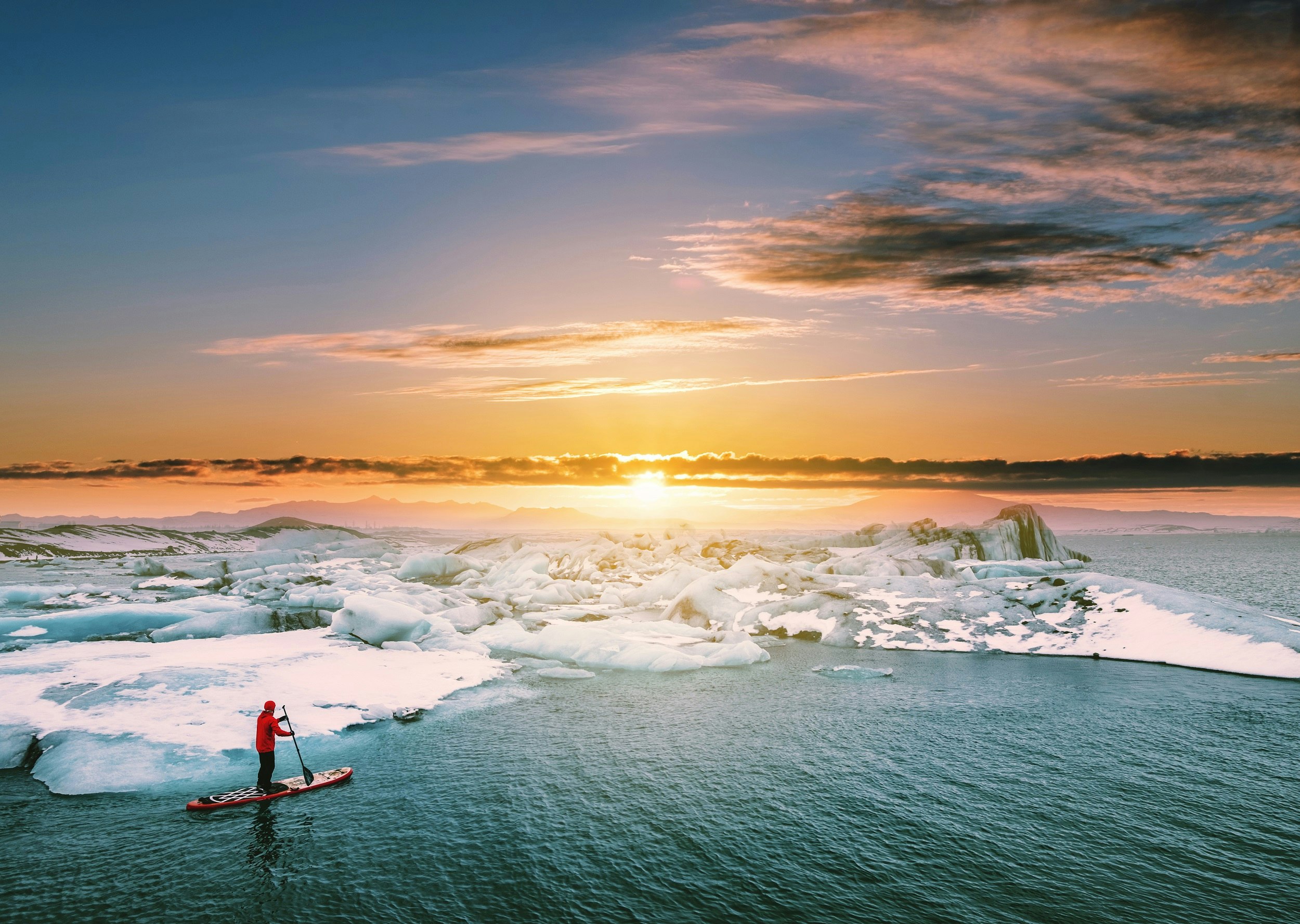
7. Stand-up paddleboarding
Veined with an abundance of rivers, pockmarked by lakes, gouged by fjords, and surrounded by a gloriously winding coast, Iceland has a fast-growing SUP scene. The most A-list location is Jökulsárlón glacial lagoon in the southeast, which has starred in two Bond films and Tomb Raider. Skimming around the edge of Breiðamerkurjökull glacier, you can paddle among the icebergs in what is now the country’s deepest lake (a body of water that’s still growing, as the glacier continues to recede).
8. Skiing & snowboarding
Despite the name, Iceland doesn’t get the kind of snowfall you might expect, and its few ski resorts are quite small. The biggest is Hlíðarfjall on the north coast, just above the country’s second city of Akureyri, with 23 pistes served by seven lifts along with a reasonable selection of ungroomed areas. Despite its modest size, however, the surreal landscape and rare chance to ski above the ocean make Hlíðarfjall worth a visit. It’s worth noting that midwinter skiing is not big in Iceland, due to almost 24-hour darkness; on the other hand, there’s every chance you’ll see the northern lights.
If the bug bites (it will) and you decide to explore more of this magnificent country on skis, ski touring and heli-skiing on the Troll Peninsula of the northwest and along the coast between Akureyri and Húsavík is becoming increasingly popular, and rightly so, since it features some of the wildest and most memorable winter landscapes on the planet.
